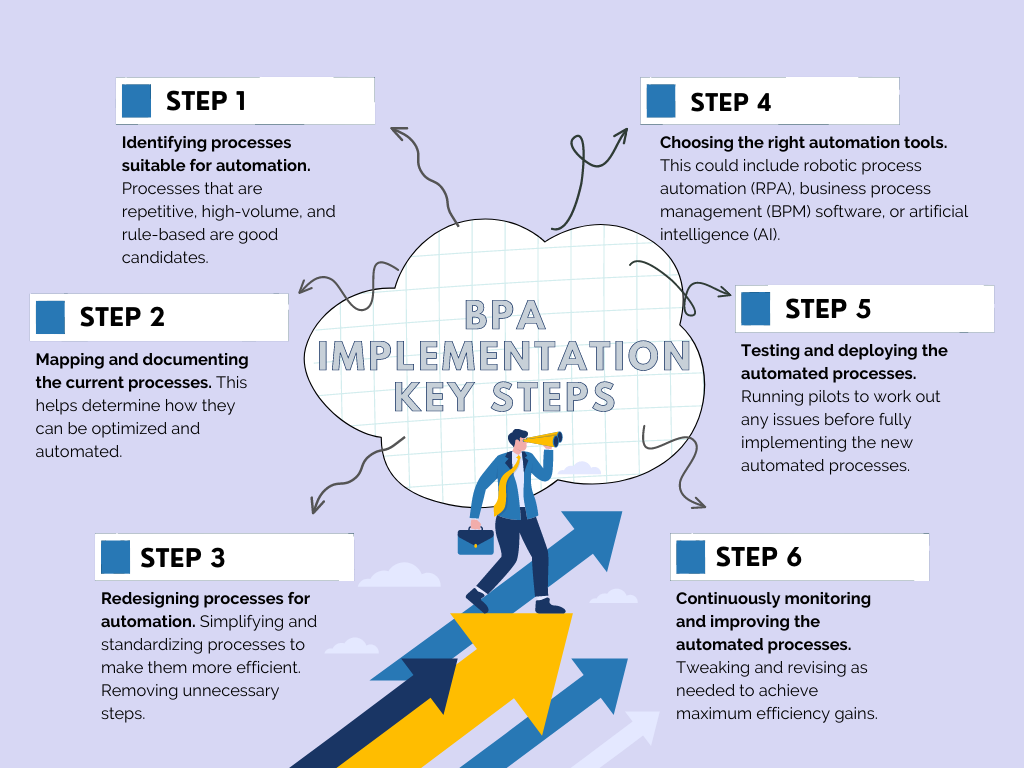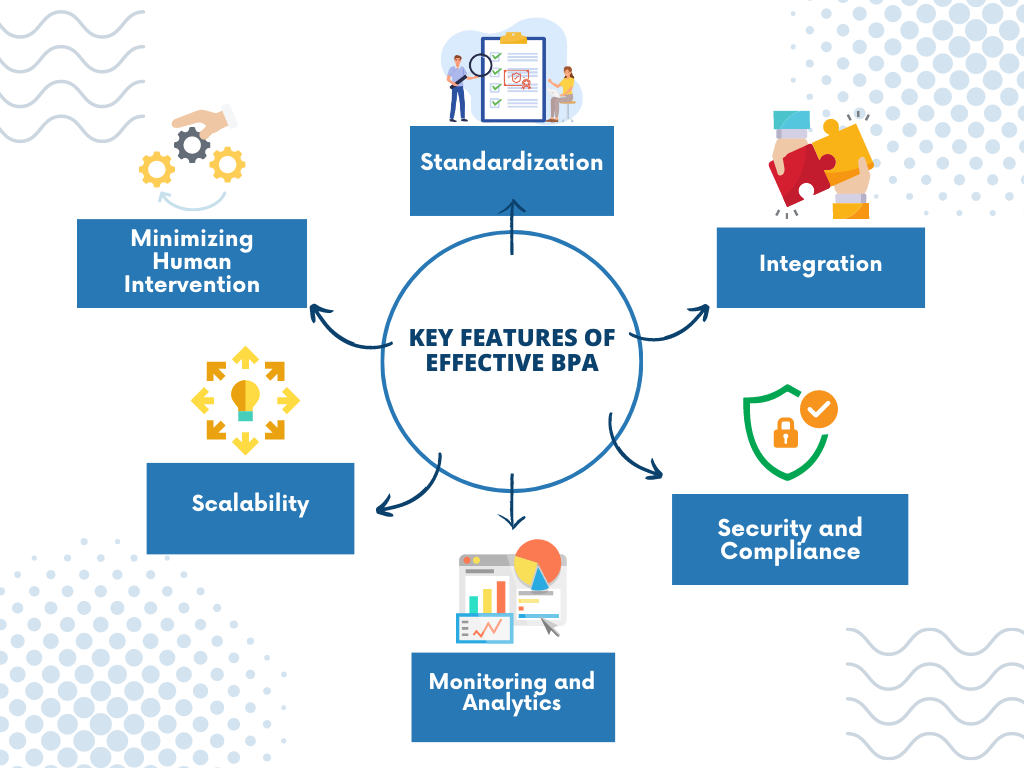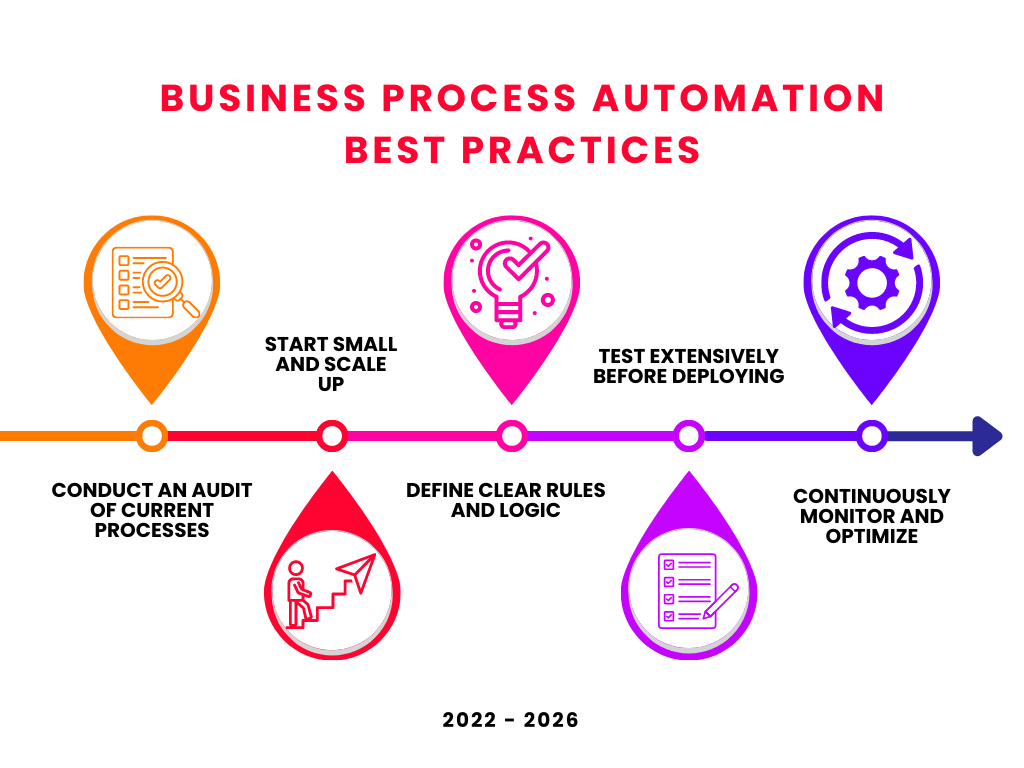
What you will get from this article
- What Exactly Is Business Process Automation?
- The Benefits of BPA: Why Companies Automate
- How Business Process Automation Works
- Key Features of Effective Business Process Automation
- Examples of Business Processes That Can Be Automated
- The Business Process Automation Lifecycle: How to Get Started
- Business Process Automation Best Practices
- BPA Case Studies: How Major Companies Automated Their Operations
Introduction
As a business leader, you’re always looking for ways to optimize operations and boost efficiency. One of the most effective methods is business process automation or BPA. Some of the world’s most successful companies like Google, Amazon, and Netflix rely on BPA to improve productivity, minimize errors, and deliver a great customer experience. When implemented properly, BPA can cut costs and increase productivity by up to 50%. In this article, you’ll learn what BPA is, the key benefits it provides, how leading companies use it, and how you can get started leveraging this transformative technology in your own organization. The future of work is automated - don’t get left behind.What Exactly Is Business Process Automation?
Business process automation (BPA) refers to the use of technology to streamline and optimize business processes and workflows.
BPA aims to reduce manual and repetitive tasks, minimize errors, and increase efficiency.
BPA utilizes software and algorithms to handle high-volume, repetitive tasks and processes that were traditionally performed by humans.
Things like data entry, claims processing, invoice handling, and customer onboarding can all be automated.
By automating repetitive and mundane tasks, BPA frees up your employees to focus on high-value work that drives innovation and growth.
The key steps in BPA implementation are:

The Benefits of BPA: Why Companies Automate
Automating business processes provides significant benefits to companies.
By implementing business process automation (BPA), organizations can achieve the following:
- Increased productivity and efficiency. Automating repetitive, routine tasks allows employees to focus on more meaningful work that adds value. This results in higher productivity and efficiency.
- Improved accuracy. Automated systems are designed to follow the same steps precisely each time, reducing human error and ensuring greater accuracy.
- Cost savings. Automating time-consuming, labor-intensive processes decreases costs associated with human labor and overhead.
- Better compliance. Automated processes follow the same controlled procedures each time, ensuring consistency and compliance with regulations and standards.
- Enhanced scalability. As a company grows, manual processes become increasingly difficult to scale. Automation provides scalability to support business growth.
- Data-driven insights. Automated systems generate data that provides visibility into processes, enabling data-driven decisions to optimize and improve operations.
How Business Process Automation Works
Business process automation (BPA) refers to the use of technology to complete business processes with minimal human intervention.
BPA works by setting up a series of actions to be carried out automatically in a specific order when started.
How BPA Works
BPA utilizes software tools known as “robots” or “bots” to automate repetitive, mundane tasks. These bots follow predefined rules and steps to automatically complete processes without human effort. For example, when you submit an online form, a bot can automatically retrieve your information, cross-check it with available data sources, and follow up via email. The bot handles the entire process from start to finish based on parameters set by developers. Some key features of BPA include:- The ability to map and document current processes to identify automation opportunities. BPA solutions capture the series of actions required to complete a process.
- Process modeling using flowcharts to visually represent the steps in a process. This helps identify bottlenecks, redundancies, and areas for optimization.
- Rules engines and decision modeling to automatically determine the appropriate path and actions based on specific rules and conditions.
- Integration capabilities to connect different systems, data, and applications across the organization. BPA pulls information from various sources to enable end-to-end automation.
- Monitoring and analytics to gain insights into process performance. BPA solutions track key metrics like cycle times, error rates, costs, and productivity to optimize processes.
- Scalability to handle a large volume of tasks and processes at scale. BPA can dramatically increase the throughput of routine tasks.
Key Features of Effective Business Process Automation
Effective business process automation relies on several key features to streamline operations.

Standardization
Standardizing your business processes is crucial for automation. This means documenting how employees currently handle processes and optimizing them into a standardized sequence of steps. Standardization reduces variability and ensures processes are handled consistently and efficiently each time.Minimizing Human Intervention
A key goal of BPA is to minimize repetitive manual tasks currently handled by employees. Automating as many routine steps as possible frees up employees to focus on more strategic work. However, human judgment and oversight are still required to manage the automation system and handle exceptions.Integration
BPA tools should integrate with your existing systems, such as enterprise resource planning platforms, customer relationship management software, and business intelligence tools. Integration enables data to flow automatically between systems, eliminating the need for manual data entry and ensuring data accuracy.Scalability
An effective BPA solution can scale as your business grows. It should be able to handle increased volumes and complexity over time. Scalability is essential for long term success and to avoid business disruption. Look for BPA tools that leverage cloud technology, as the cloud offers virtually unlimited scalability.Security and Compliance
Robust security protects your data and systems from unauthorized access or cyber threats. Compliance ensures your BPA solution meets industry regulations and standards. Security and compliance are especially important when customer or employee data is involved.Monitoring and Analytics
BPA tools provide monitoring and analytics to optimize your automated processes over time. Monitoring tracks the performance and health of your systems in real time. Analytics and reporting allow you to measure key metrics, uncover insights, and make data-driven decisions to enhance your BPA program.Examples of Business Processes That Can Be Automated
Business process automation (BPA) refers to using technology to execute recurring business processes and workflows to increase efficiency and reduce human error.
Many core business functions can benefit from automation, including:
Human Resources
Tasks like onboarding new employees, managing timesheets and expenses, and updating employee records can be automated. For example, when a new employee is hired, an automated process can create their profile in the company directory, set up their workstation, and enroll them in benefit programs.Finance and Accounting
Invoicing clients, paying bills, reconciling bank statements, and generating financial reports are all processes that can be automated. Accounts payable and accounts receivable workflows in particular benefit greatly from automation. For instance, an automated invoicing system can track billable hours logged by employees, generate invoices to send to clients, follow up on late payments, and reconcile payments received.Customer Service
Automation can handle basic customer service requests like updating contact information, processing returns or refunds, and answering frequently asked questions. Chatbots, in particular, use natural language processing to understand questions from customers and provide responses. Many companies use chatbots to field simple inquiries and route more complex issues to human agents.Supply Chain Management
Ordering supplies, managing inventory levels, and coordinating shipments are supply chain processes that often involve many manual steps but can benefit from automation. For example, automation can predict when inventory levels are running low, automatically order more stock to avoid shortages, and track the progress of shipments to ensure on-time delivery.The Business Process Automation Lifecycle: How to Get Started
To implement business process automation in your organization, it’s important to follow the key steps in the BPA lifecycle:
Assess and Evaluate
The first step is to assess your current business processes and identify which ones would benefit most from automation. Look for processes that are manual, repetitive, time-consuming, and prone to human error. Analyze how much time and resources each process requires to determine the potential ROI of automation. Some questions to ask include:- Which processes are slowing us down and reducing productivity?
- Where are the bottlenecks and inefficiencies in our workflows?
- What processes require significant manual data entry or re-entry?
Redesign and Optimize
Once you’ve evaluated your processes, the next step is to redesign and optimize them for automation. This may involve simplifying complex processes, standardizing inconsistent processes, and digitizing any paper-based processes. The goal is to make your processes as streamlined and efficient as possible before automating them.Automate and Test
With your processes redesigned, you can now select an automation tool and program the technology to handle your processes. Be sure to thoroughly test the automated processes to ensure they are functioning properly and meeting your needs before rolling them out organization-wide. It may take some troubleshooting and re-programming to work out any issues.Monitor and Manage
The final step is to continuously monitor your automated processes to make sure they are running smoothly and yielding the desired benefits. Look for any new inefficiencies or bottlenecks as well as opportunities for further optimization. Be prepared to make minor tweaks to your automated processes as needed to keep them performing at their peak. With regular management and oversight, business process automation can provide lasting rewards.Ready to automate your business process for better productivity? Sanka is more than an automation platform! Sanka help to scale up your business! Try Sanka for free now!
Business Process Automation Best Practices
To successfully implement business process automation (BPA) in your organization, following best practices is key.
